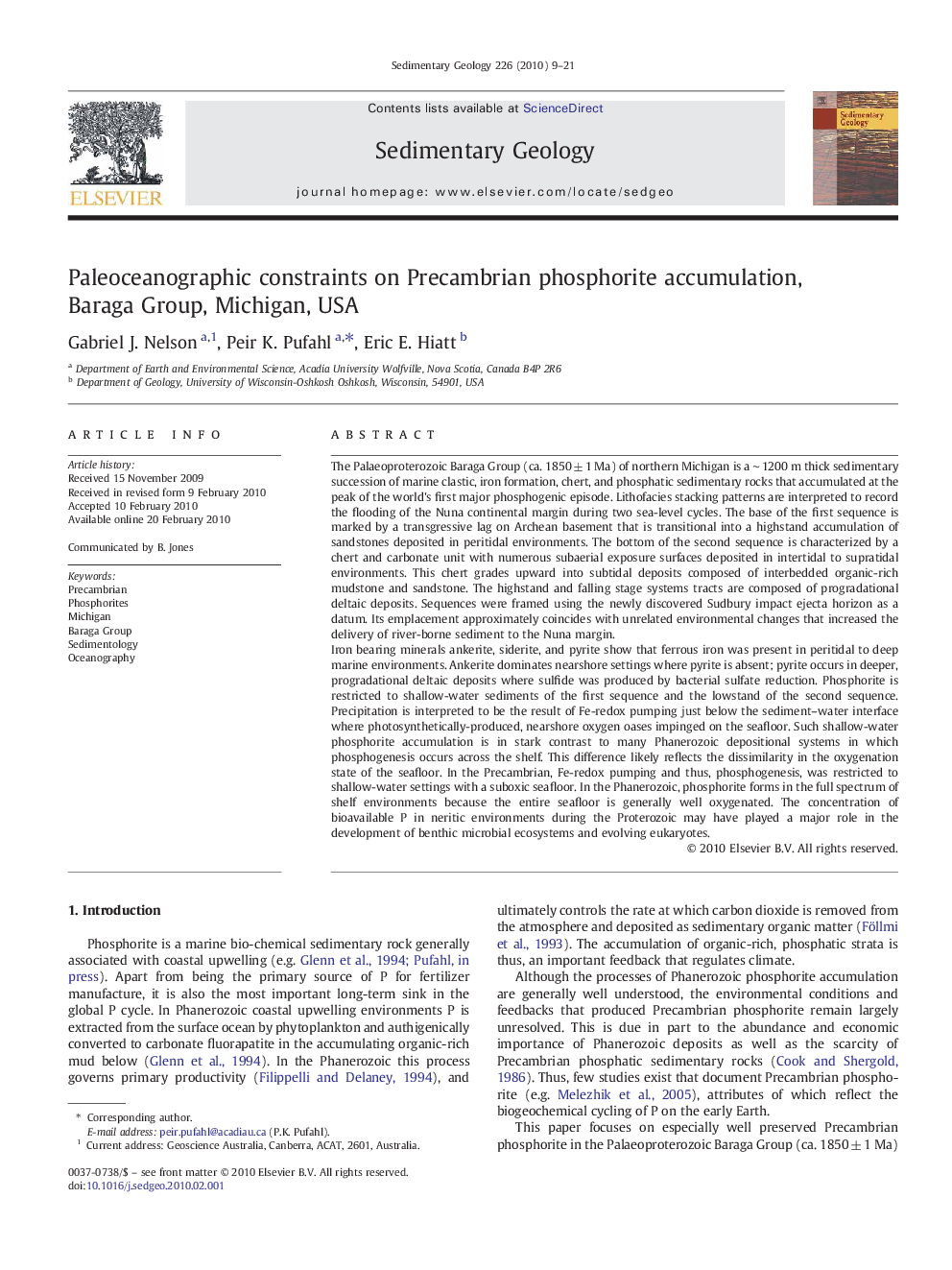| کد مقاله | کد نشریه | سال انتشار | مقاله انگلیسی | نسخه تمام متن |
|---|---|---|---|---|
| 4690178 | 1636126 | 2010 | 13 صفحه PDF | دانلود رایگان |

The Palaeoproterozoic Baraga Group (ca. 1850 ± 1 Ma) of northern Michigan is a ∼ 1200 m thick sedimentary succession of marine clastic, iron formation, chert, and phosphatic sedimentary rocks that accumulated at the peak of the world's first major phosphogenic episode. Lithofacies stacking patterns are interpreted to record the flooding of the Nuna continental margin during two sea-level cycles. The base of the first sequence is marked by a transgressive lag on Archean basement that is transitional into a highstand accumulation of sandstones deposited in peritidal environments. The bottom of the second sequence is characterized by a chert and carbonate unit with numerous subaerial exposure surfaces deposited in intertidal to supratidal environments. This chert grades upward into subtidal deposits composed of interbedded organic-rich mudstone and sandstone. The highstand and falling stage systems tracts are composed of progradational deltaic deposits. Sequences were framed using the newly discovered Sudbury impact ejecta horizon as a datum. Its emplacement approximately coincides with unrelated environmental changes that increased the delivery of river-borne sediment to the Nuna margin.Iron bearing minerals ankerite, siderite, and pyrite show that ferrous iron was present in peritidal to deep marine environments. Ankerite dominates nearshore settings where pyrite is absent; pyrite occurs in deeper, progradational deltaic deposits where sulfide was produced by bacterial sulfate reduction. Phosphorite is restricted to shallow-water sediments of the first sequence and the lowstand of the second sequence. Precipitation is interpreted to be the result of Fe-redox pumping just below the sediment–water interface where photosynthetically-produced, nearshore oxygen oases impinged on the seafloor. Such shallow-water phosphorite accumulation is in stark contrast to many Phanerozoic depositional systems in which phosphogenesis occurs across the shelf. This difference likely reflects the dissimilarity in the oxygenation state of the seafloor. In the Precambrian, Fe-redox pumping and thus, phosphogenesis, was restricted to shallow-water settings with a suboxic seafloor. In the Phanerozoic, phosphorite forms in the full spectrum of shelf environments because the entire seafloor is generally well oxygenated. The concentration of bioavailable P in neritic environments during the Proterozoic may have played a major role in the development of benthic microbial ecosystems and evolving eukaryotes.
Journal: Sedimentary Geology - Volume 226, Issues 1–4, 15 April 2010, Pages 9–21